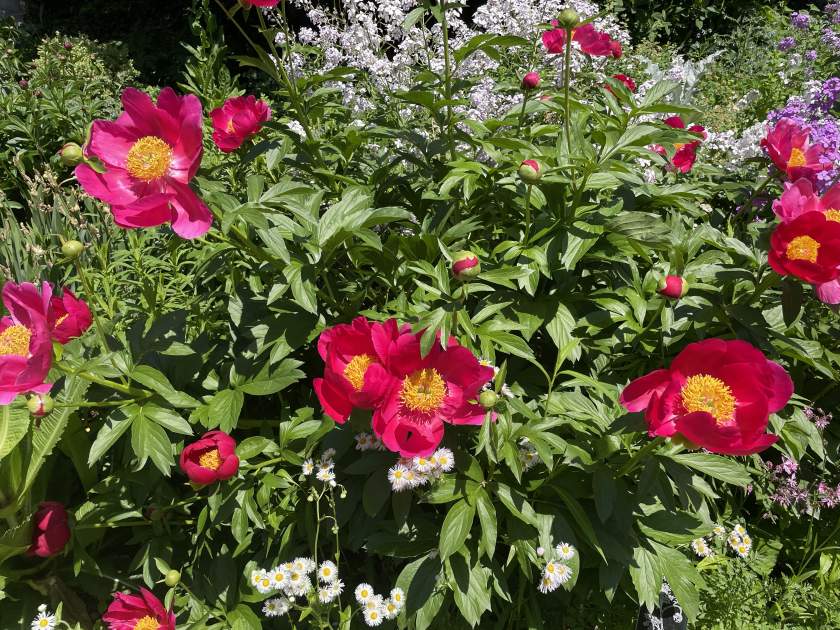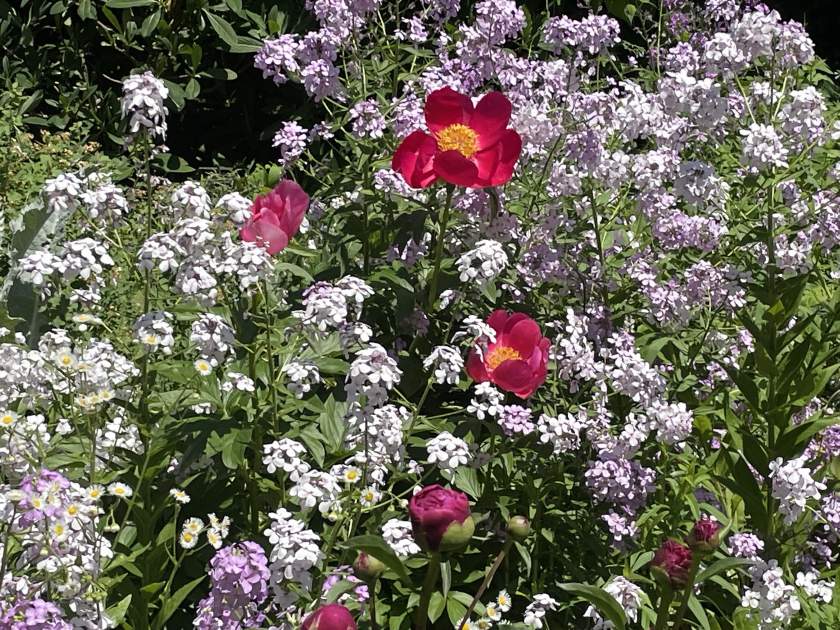Paeonia peregrina: The Beautiful “Red Peony of Constantinople”
Paeonia peregrina, also known as the “Red Peony of Constantinople” or the “Peregrine Peony,” is an exquisite herbaceous species belonging to the peony family, Paeoniaceae. Native to Southeastern Europe and Turkey, this perennial flowering plant showcases stunning deep red flowers adorned with a vibrant yellow buff of stamens and red stigmas. Its cupped flowers face upward, adding to the allure of this remarkable species. With variations in plant habit, foliar characteristics, and minor flower color differences, Paeonia peregrina represents the authentic species and not hybrids. Its deep green, lobed foliage further contributes to its captivating appearance.
Belonging to the family Paeoniaceae, this herbaceous perennial enchants with its radiant blooms and striking foliage. As a member of the peony family, it shares its lineage with other renowned peony species, contributing to its reputation as a cherished garden gem.
Characteristics and Description
Paeonia peregrina boasts single, glossy red flowers that measure an impressive 10-13 cm in diameter. These captivating blooms exhibit prominent yellow stamens, which enhance their visual impact. Typically appearing in spring, the flowers of Paeonia peregrina create a breathtaking spectacle, enchanting all who behold them.
The plant itself features erect stems and 9-lobed, deeply divided leaves. This distinctive foliage adds depth and character to the overall aesthetic of Paeonia peregrina. With variations in plant habit, foliar characteristics, and minor flower color differences, each specimen possesses a unique charm that sets it apart.
Cultivation of Paeonia peregrina:
When it comes to cultivating Paeonia peregrina, it is important to provide optimal growing conditions to ensure its healthy growth and abundant flowering. Here are some guidelines to help you cultivate this remarkable plant:
Sunlight: Paeonia peregrina thrives in full sun conditions. Ensure that the plant receives at least six hours of direct sunlight each day to promote vigorous growth and abundant blooming.
Watering: This species is not particularly drought-tolerant, so regular watering is crucial during the growing season. Maintain consistently moist soil without allowing it to become waterlogged, as excessive moisture can lead to root rot.
Soil: Paeonia peregrina flourishes in well-drained soil that is rich in organic matter. Aim for a pH level between 6.5 and 7.5 to provide the ideal environment for optimal growth and development.
Pests and Disease: Fortunately, Paeonia peregrina is relatively pest- and disease-free. However, it may be susceptible to powdery mildew and root rot. To protect the plant, consider using fungicides or insecticidal soaps, following the instructions provided.
Propagation:
Paeonia peregrina can be propagated through two primary methods: division and seed propagation. Here’s what you need to know about each method:
Division: Division is the most common and effective method of propagating Paeonia peregrina. Every 3-4 years, carefully dig up the plant, and using a sharp knife, divide the root ball into several sections. Each section should have at least 3-4 growth buds (eyes). Ensure that the divisions have healthy roots attached.
Once divided, plant the sections in well-drained soil, ensuring that the eyes are facing upward and are positioned just below the soil surface. Water the newly planted divisions regularly to promote establishment and growth.
Seed Propagation:
Propagating Paeonia peregrina from seeds is another option, but it requires patience and time. Here’s how you can propagate it from seeds:
- Obtain fresh seeds from a reliable source or collect them from mature seed pods.
- Sow the seeds in the fall in a well-drained soil bed or seed tray. Alternatively, you can sow them outdoors in a shady spot.
- Cover the seeds with a thin layer of soil, ensuring they are not buried too deeply.
- Keep the soil consistently moist but not waterlogged. Use a misting spray or a gentle watering method to avoid disturbing the seeds.
- Place the seed tray or seed bed in a location with a cool temperature, such as a cold frame or a shaded area.
- Germination of peony seeds can be slow and erratic, often taking up to two years. Be patient and provide the necessary care throughout the germination period.
- Once the seedlings have developed a few sets of leaves, transplant them into individual pots or into a prepared garden bed.
- Provide the seedlings with a shaded spot and water them regularly to support their growth.
- It may take several years for the seedlings to reach flowering size, so continue to care for them diligently until they mature.
Additional Tips for Propagation:
- For best results, use fresh seeds for propagation.
- Choose a well-drained soil mix for sowing the seeds.
- Maintain a consistently moist environment for the seeds, but avoid overwatering.
- Be aware that germination can be a slow process, sometimes taking up to two years.
- Exercise patience and provide appropriate care during the seedling stage until they are ready for transplanting.
Common Names in Different Countries:
- Croatian: Božur
- English: Balkan Paeony
- French: Pivoine Voyageuse
- German: Byzantinische Pfingstrose, Fremde Pfingstrose
- Italian: Peonia Pellegrina
- Romanian: Bujor de Padure
- Russian: Пион иноземный (Pion Inozemny)
- Serbian: Божур (Božur)
- Turkish: Bocu






